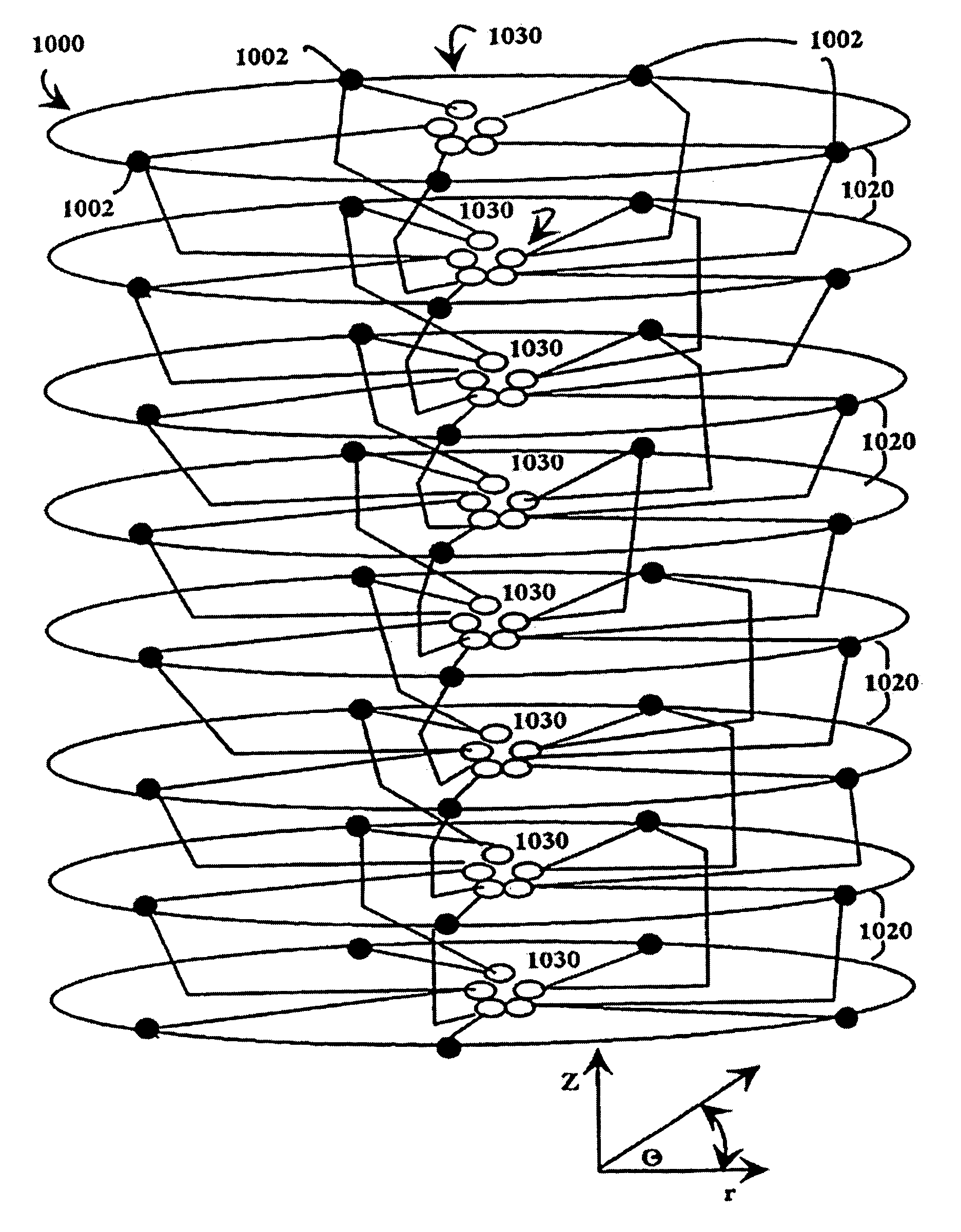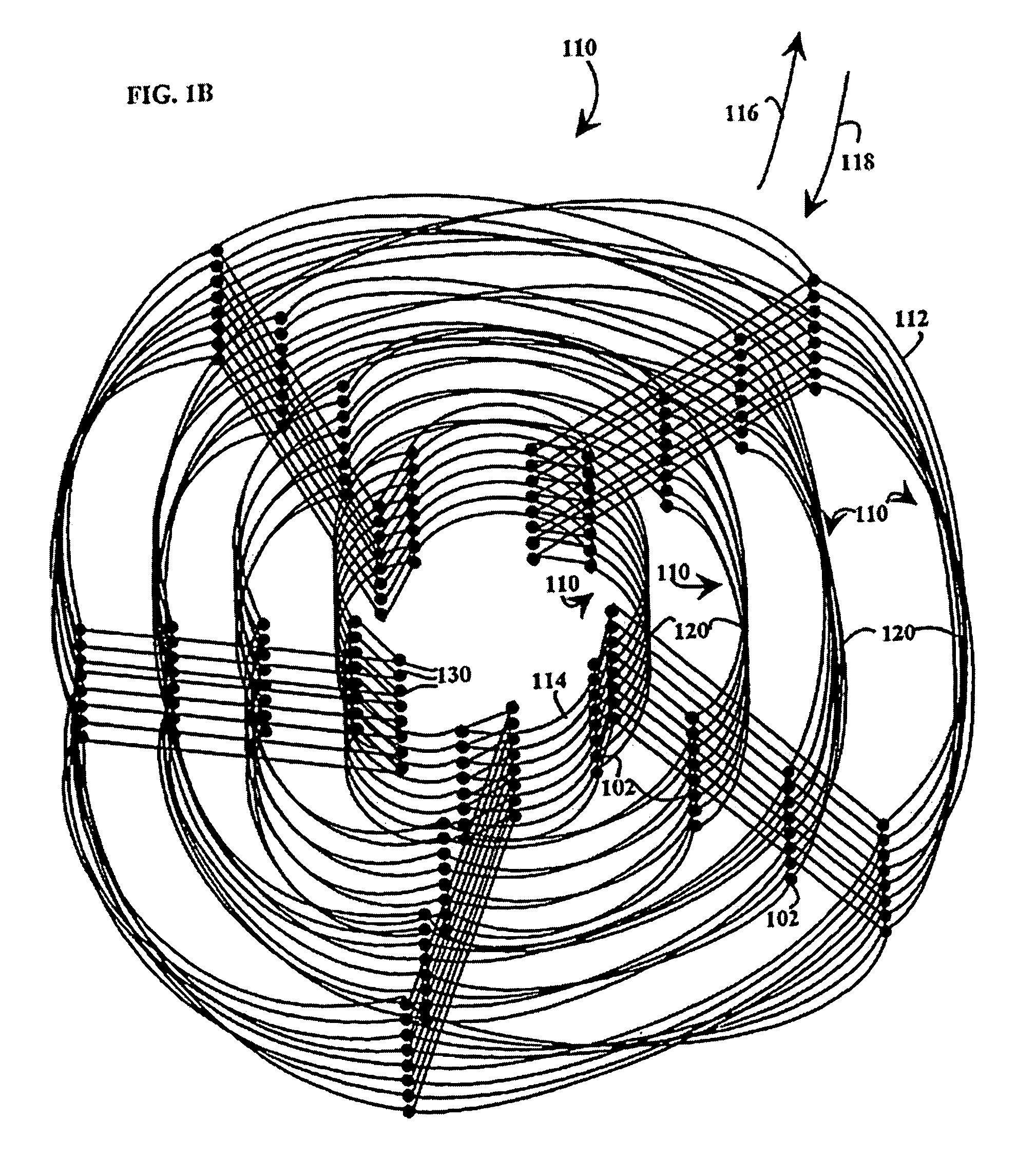Multiple level minimum logic network
a logic network and multi-level technology, applied in data switching networks, instruments, architectures with multiple processing units, etc., can solve the problems of computational units idle, ring and mesh networks are plagued by lengthy delay in message communication, and the latency of accessing another computational unit is increased, so as to minimize processing and storage overhead at each node, the effect of high bandwidth and low latency
- Summary
- Abstract
- Description
- Claims
- Application Information
AI Technical Summary
Benefits of technology
Problems solved by technology
Method used
Image
Examples
Embodiment Construction
[0063]Referring to FIGS. 1A, 1B, 1C and 1D, an embodiment of a multiple level minimum logic interconnect apparatus 100 includes multiple nodes 102 which are connected in a multiple level interconnect structure by interconnect lines. The multiple level interconnect structure is shown illustratively as a three−dimensional structure to facilitate understanding.
[0064]The nodes 102 in the multiple level interconnect structure are arranged to include multiple levels 110, each level 110 having a hierarchical significance so that, after a message is initiated in the structure, the messages generally move from an initial level 112 to a final level 114 in the direction of levels of a previous hierarchical significance 116 to levels of a subsequent hierarchical significance 118. Illustratively, each level 110 includes multiple structures which are called rings 120. Each ring 120 includes multiple nodes 102. The term “rings” is used merely to facilitate understanding of the structure of a netwo...
PUM
 Login to View More
Login to View More Abstract
Description
Claims
Application Information
 Login to View More
Login to View More - R&D
- Intellectual Property
- Life Sciences
- Materials
- Tech Scout
- Unparalleled Data Quality
- Higher Quality Content
- 60% Fewer Hallucinations
Browse by: Latest US Patents, China's latest patents, Technical Efficacy Thesaurus, Application Domain, Technology Topic, Popular Technical Reports.
© 2025 PatSnap. All rights reserved.Legal|Privacy policy|Modern Slavery Act Transparency Statement|Sitemap|About US| Contact US: help@patsnap.com



